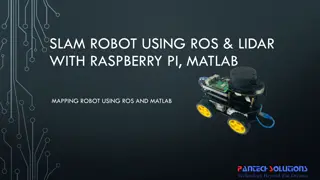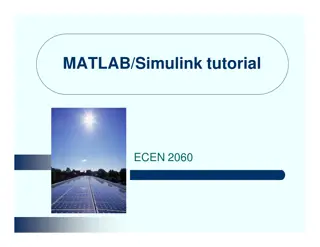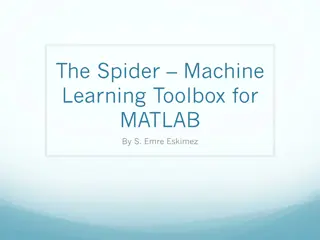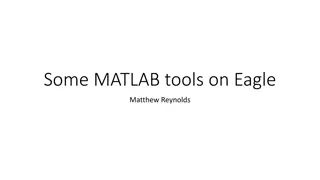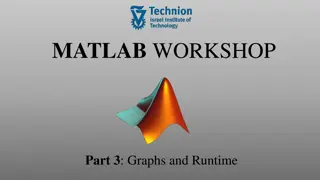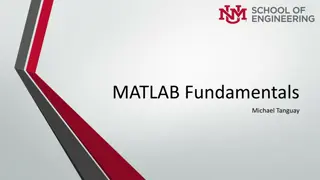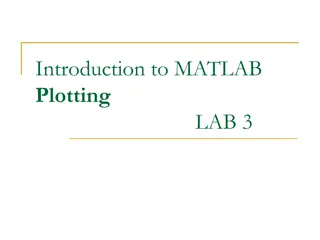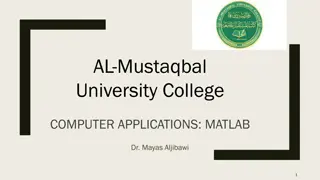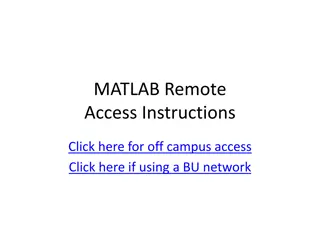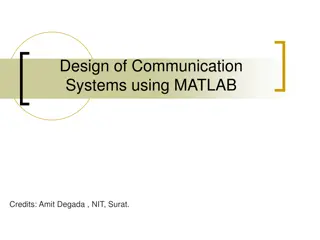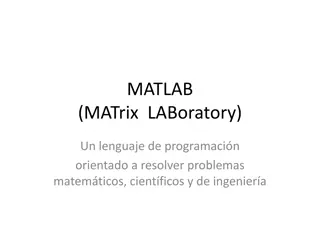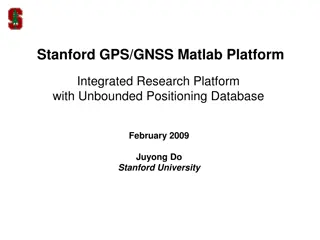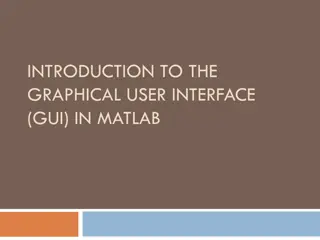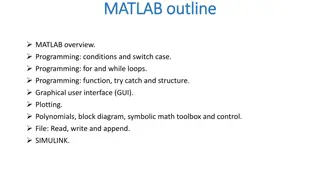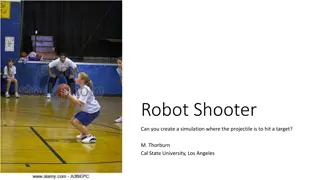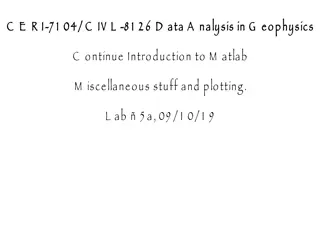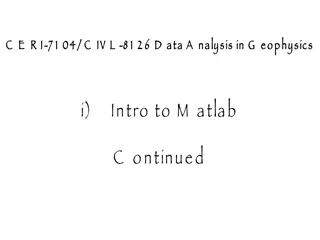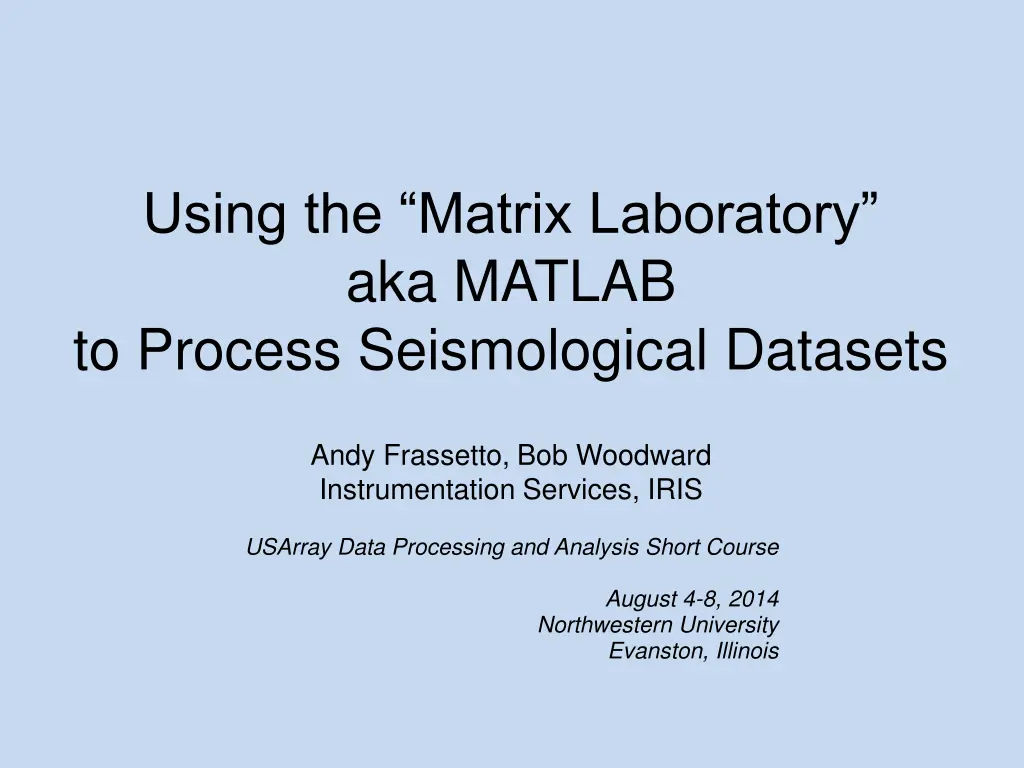
Processing Seismological Datasets in MATLAB
Learn how MATLAB can be used to process seismological datasets efficiently, covering data acquisition, file formats, data preparation, and more. Explore the benefits and challenges of using MATLAB in seismology research.
Download Presentation

Please find below an Image/Link to download the presentation.
The content on the website is provided AS IS for your information and personal use only. It may not be sold, licensed, or shared on other websites without obtaining consent from the author. If you encounter any issues during the download, it is possible that the publisher has removed the file from their server.
You are allowed to download the files provided on this website for personal or commercial use, subject to the condition that they are used lawfully. All files are the property of their respective owners.
The content on the website is provided AS IS for your information and personal use only. It may not be sold, licensed, or shared on other websites without obtaining consent from the author.
E N D
Presentation Transcript
Using the Matrix Laboratory aka MATLAB to Process Seismological Datasets Andy Frassetto, Bob Woodward Instrumentation Services, IRIS USArray Data Processing and Analysis Short Course August 4-8, 2014 Northwestern University Evanston, Illinois
Courtesy Maggie Benoit (Friend of IRIS, NSF Program Officer) 2
The Bad News Matlab is a commercial product: Considerable startup cost for license/toolboxes Yearly maintenance fees Matlab can be clunky Slow to open, difficult to use with strings 3
The Good News Matlab is a commercial product: Major discounts for students, universities often purchase group licenses, etc. Extensive resources, support from the source Widespread, multi-disciplinary base of users Established, prominent, well-supported in its usage within the seismological community 4
The Basics Data acquisition Data file format Reading data Data preprocessing Analysis Speed, speed, speed The importance of sanity checks Use the plotting tools! Results Use the plotting tools! 5
Data Files Data file formats SAC files are traditionally used Changing trends: Chad s talk tomorrow covers reading data directly via irisFetch.m With time and effort you can read any ASCII / binary file format Gotcha Byte order Data reading Use wildcarding of file names to subset the # of files that needs to be read? Typically make a pass to read headers Allocate memory for data Read data into one matrix Gotcha S N C L KNETWK, KCMPNM, KSTNM, KHOLE 6
Prepping the Data Organize data in matrix Seismograms down columns Fastest for working with single seismograms Facilitates using MATLAB functions Use epochal time for all time-related arithmetic Decimate as you go To minimize total memory required Time series toolbox contains common filtering and tapering functions Consider using the MATLAB save command to save a pre-processed (e.g., collated, decimated, etc.) copy of the data Can save significant time when doing large numbers of runs to explore other parameters or to debug Gotcha MATLAB epochal time different from UNIX 7
Analysis Typically, this is all about speed See resources section at end of slides Rich built-in function environment Build your own functions for code re-use Use development tools, e.g. checkcode http://www.mathworks.com/help/matlab/ref/checkcode.html Use the simple plot commands to sanity check your results This is one of the key benefits of developing in MATLAB Debugging code Debugging algorithm Especially useful: hist to make a histogram of just about anything plot time series and other continuous functions scatter discrete x y data points Gotcha Label those axes 8
MATLAB Resources MATLAB Central Functions and help threads for all types of calculations, great for custom needs http://www.mathworks.com/matlabcentral/ The GISMO Waveform Suite Celso Reyes Seismic analysis and display http://www.giseis.alaska.edu/Seis/EQ/tools/GISMO/ SEIZMO Garrett Euler http://epsc.wustl.edu/~ggeuler/codes/m/seizmo/ M_Map R. Pawlowicz Mapping tools http://www.eos.ubc.ca/~rich/map.html 9
MATLAB Resources Libmseed IRIS DMC (C. Trabant) Comprehensive library of miniSEED manipulation functions C code, with a MATLAB interface module matTaup a MATLAB version of the TauP toolkit Ttbox travel time toolbox M. Knapmeyer http://www.dlr.de/pf/en/desktopdefault.aspx/tabid- 4880/8104_read-36233/ Function library Frederik Simons http://geoweb.princeton.edu/people/simons/software.html Accelerating MATLAB Loren Shure s blog on accelerating MATLAB http://blogs.mathworks.com/loren/2008/06/25/speeding-up-matlab-applications/ Summary / tutorial on accelerating MATLAB http://www.getreuer.info/matopt.pdf?attredirects=0 10
Or maybe dont use MATLAB at allenter octave, an open source alternative, http://www.gnu.org/software/octave/ 11


